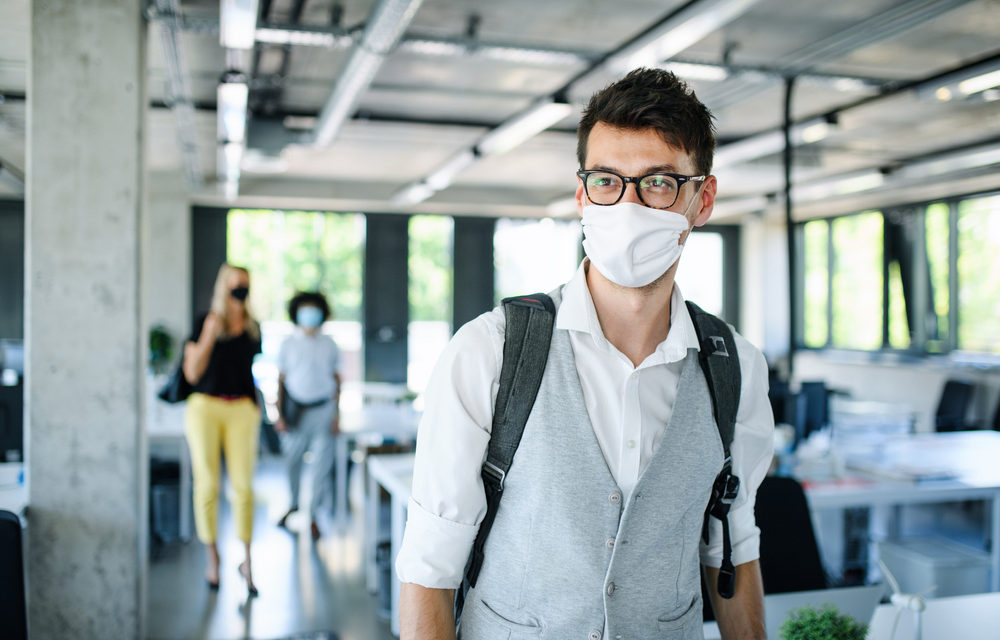It will be a long way to go before things go back to the way they are used to—if that's even possible at all. The COVID-19 pandemic has changed the way the world works, severely affecting business operations, too. The transition to remote work has been the immediate solution for many, with brands taking their processes online due to the quarantine.
However, to both the delight and horror of many, working from home won't be forever. The time will come when remote work for employees will transition back to offices and sites, as some things just can't entirely be done online.
That said, it's your responsibility as an employer to ensure a safer working place for your team. Take a look at the different measures you can do below to prepare your staff for the office post-lockdown.
- Install simple facilities that prevent the spread of COVID-19
There are a few low-cost additions you can place in your office to lessen the chances of the virus spreading. Regardless if you already have cases of the disease reported in your community or not, you should make an effort to do the following:
- Ensure that there is daily disinfection of all spaces and surfaces in the office, especially common areas. This means items like desks, tables, and keyboards, along with areas such as the pantry and meeting rooms.
- Install foot bars on doors, so employees don't have to touch doorknobs with their hands often.
- Have alcohol or sanitizer in place for all areas of the office, so employees can always disinfect immediately.
Contaminated surfaces can spread the virus. If the spaces are always clean, there are fewer chances for one to have the disease.
- Enforce physical distancing measures
If you previously had an open office layout or your employees were sitting too close to each other, it's time to rearrange your workspace's interiors. Ideally, each employee should have a distance of 6 feet apart. If the office doesn't have enough space for this set-up, then it may be wiser to use areas of the room like pantries or meeting areas for extra space.
Alternately, you could negotiate for your employees to come in teams, rotating the schedules of in-office and remote workdays. If you're having team meetings, it may be best to hold them online rather than in-person to avoid having a mass gathering or crowd in a room.
- Remind them about proper office attire
You should have a strict "no mask, no entry" policy in the workplace. Face masks help catch droplets from the wearer's mouth, which could potentially carry the virus. Be sure also to have a stock of face masks and tissue so that you can lend extras to those who may need it.
If your work requires it, then be sure also to provide gloves and shoe covers, as well, to lessen the spread of the disease further. Teach proper disposal of these items, and continually remind them that having protective gear doesn't mean they're automatically safe.
- Put up signs of proper hygiene
Don't get tired of reminding your employees of proper sanitation techniques in the office, such as washing their hands regularly and avoiding touching their faces. These are some of the common ways that the virus spreads.
Regularly send email blasts or health reminders on your group chat, so you can continuously keep the conversation about proper hygiene going.
- Have strict measures for those who report sick
Before your employees can enter the building or office, make sure that you conduct temperature checks and ask them how they're feeling. This is an important step, especially since some people who may be infected with COVID-19 can be asymptomatic, while some will take several days before showing any symptoms.
Regardless if it's an allergy or regular flu, it's best not to let anyone who has a compromised immune system in your workplace. Even if an employee doesn't have the disease, they may be more susceptible to it because they're already sick.
- Ask your employees for their suggestions
Ultimately, you want to make your office a conducive space for your team. If there's anything you can do to make their trips to the office a more pleasant experience, sometimes the best way to know is to ask. They might also be practicing measures at home that could be applied in the office, and vice versa.
Also, respect their wishes if they deem that reporting to the office is not doable for them. Some may have trouble reaching their office due to limited transportation options, while some simply fear that they may catch the virus and bring it back to their families who may already be immunocompromised.
Conclusion
Even with COVID-19, the adage "Prevention is better than cure" still rings true. Don't take your health for granted, nor be too lax on the safety measures that need to be done. The fight with the pandemic isn't over, and it takes being safe to reduce the risk of infection.













